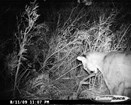The Midden is the Resource Management Newsletter of Great Basin National Park, published each summer and winter. Find out the latest going on at Great Basin National Park, Nevada in resource management and research. The Midden - Great Basin National Park: Vol. 22, No.1, Summer 2022
-
Great Basin National Park
Article 1: Thinning Project Outreach

In October 2021, fire crews began work on the 65-acre Boundary Thin. This is one of several projects the park is working on to reduce fuels, protect life and property, and restore plants and animals. Based on questions and comments from the community and visitors, we wanted to provide more information on this project. Read more
-
Great Basin National Park
Article 2: Results of 2021 Christmas Bird Count

Results of 2021 Christmas Bird Count Read more
-
Great Basin National Park
Article 3: Bats in Spring Valley

Thousands of Brazilian Free-tailed Bats migrate through Spring Valley each year. They are increasingly vulnerable to wind energy developments. Finding ways to work for the good of the wind developers and the bats is an ever challenging circumstance. Read more
-
Great Basin National Park
Article 4: Lint Camp Recap

Here is a recap on the yearly lint camp where volunteers come and help clean Lehman Caves. Read more
-
Great Basin National Park
Article 5: Mountain Lions are Keystone Species

Mountain lions are keystone species. Through interactions with their prey, mountain lions create “top down” effects that regulate prey abundance and behavior, reduce herbivory, invasive species, and disease transmission, while increasing soil fertility and biodiversity (Beschta and Ripple, 2009). These predator induced trophic cascades can restore and maintain healthy ecosystems (Fraser et al., 2015). Read more
-
Great Basin National Park
Article 6: Changing Faces: A Recent History of Snow Surveys in GRBA

One of the oldest datasets in the Park is the Baker Creek Snow Survey, with three snow courses located in the Baker Creek watershed. Since 1941, the snow has been measured in late February and late March every year (and in some years also late January and late April). Read more
